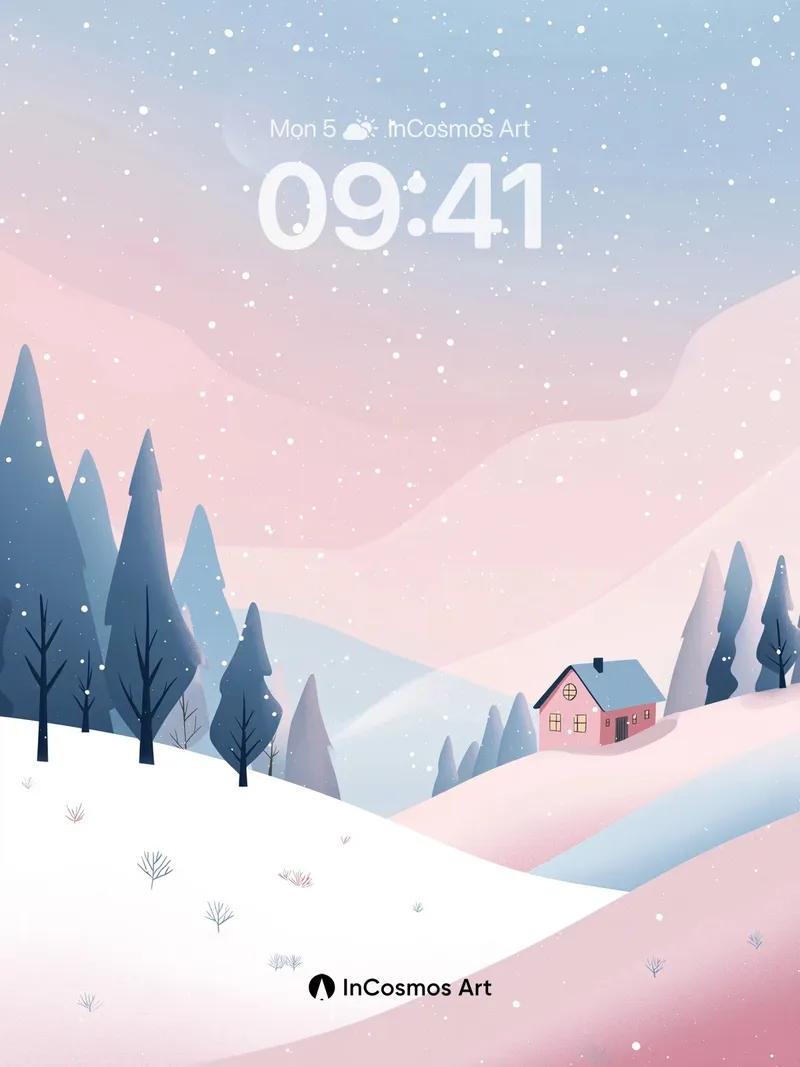Snow falls silently, covering fields and rooftops, transforming the world into a tranquil white. In such nights, light spills from windows, warm yellow glows melting the edges of cold. People bundle up, skating on ice, walking through forest paths, children leading dogs, elders sitting by hearths. These moments are not mere holiday decorations but life itself breathing in the depths of season. Buildings arranged in soft pastels and muted blues, roofs blanketed like wool, chimneys releasing wisps of smoke, as if time slows down. Where nature meets human habitation lies the most genuine dwelling of emotion. Footprints in snow, laughter near frozen lakes—each is a gentle resistance against solitude.
Architectural Language in Snow
House silhouettes soften under snow, gables and slopes becoming part of nature. Colors no longer shout but form visual order in low-saturation pinks, off-whites, pale blues. This design choice suggests a humble philosophy—no desire for extravagance, only harmony with environment. Each building acts as an independent narrative unit; when lights appear in windows, stories begin. They stand close yet uncluttered, maintaining just-right emotional distance, like interpersonal spacing.
The Weaving of Holiday and Daily Life
Christmas trees emerge as central symbols in city plazas, village centers, private yards. They are more than decoration—they carry collective memory. When people dance, sing, share food around them, holiday meaning shifts from ritual to everyday warmth. Cities rise tall, yet lights still reach ground; villages remain low, yet hopes soar high. Regardless of scale, spaces express a shared wish: to be seen, connected, warmed.
Balance Between Solitude and Companionship
One figure walks through snow, surrounded by trees, a small dog following closely. This scene holds no sorrow, only quiet belonging. Solitude is not absence but self-recognition. In another view, crowds skate on ice, laughter echoing in cold air. Both states coexist, forming a true portrait of winter psychology: individuals seek inner order in nature, groups rebuild bonds through shared activity. Snow serves as both medium and witness.
Poetics of Light and Darkness
Night sky dotted with stars, lights flicker one by one. Darkness is not emptiness but the backdrop that allows light to exist. Building lights pierce snow haze, forming warm pathways guiding sight and heart. This interplay transcends physics—it becomes emotional metaphor: even in coldest moments, sources of light wait to be discovered.
































